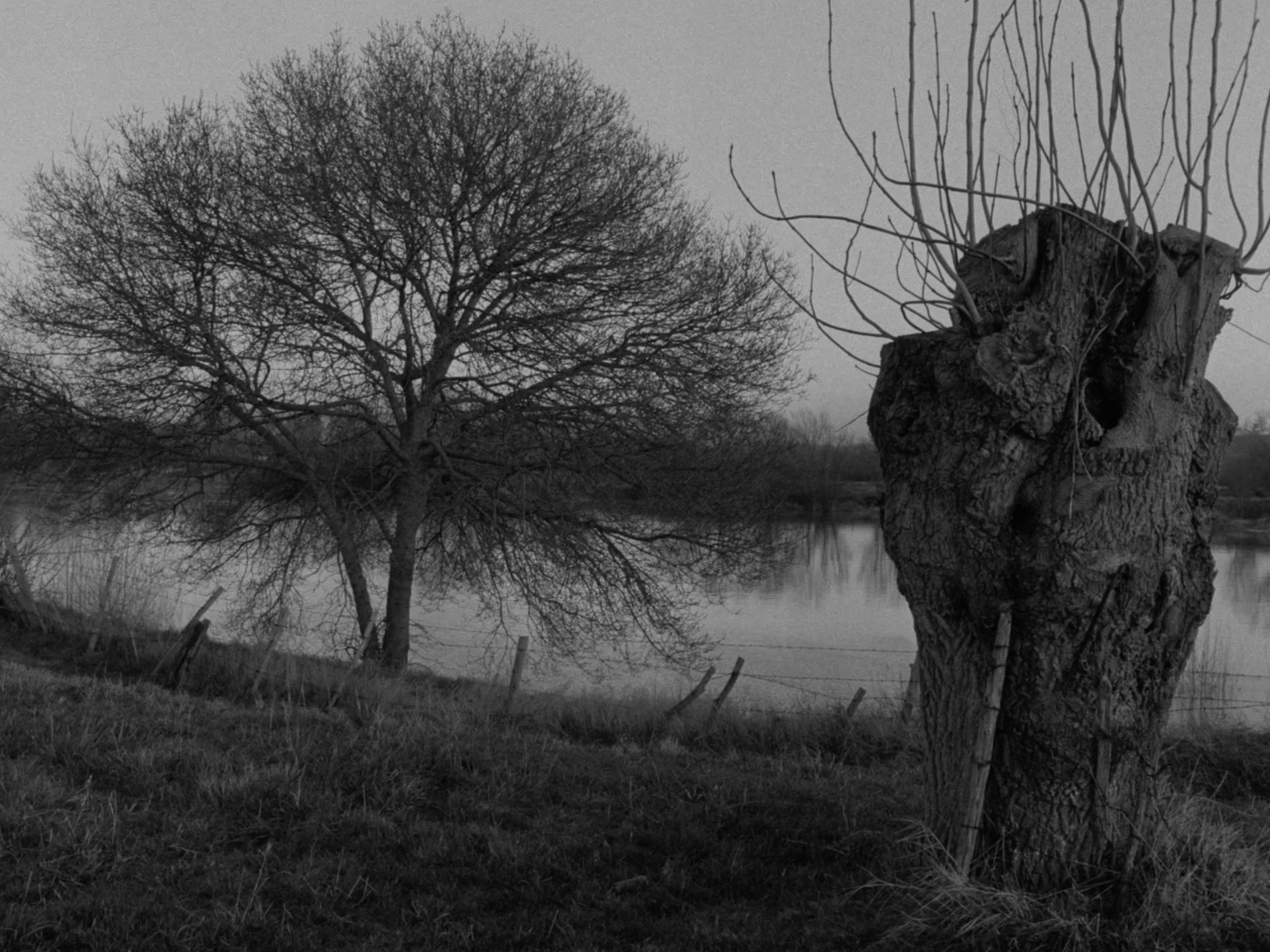
Completed after the 2006 death of Huillet, who co-wrote the script with Straub, Itinerary draws on Jean Bricard's memories of childhood on Coton Island in the Loire – a formerly bustling port town that, after being occupied by the Germans, became the scene of ruthless round-ups and bloodshed.
EN
“As part of a research project led by the Conservation Centre for the Banks of the Loire and its Tributaries, in 1994, French sociologist Jean-Yves Petiteau audio recorded and photographed an interview with Jean Bricard, approaching by boat and walking the Ile Coton at the Loire River. The island of his childhood was the site of wartime occupation and subsequent pollution. It was the site of capture and executions, including that of his uncle, and where he learned to use a machine gun at the age of twelve because he had brothers in the resistance.
Pollard trees of the Loire: poplar, ash, willow, and oak. Pollarding trees by cutting branches back to the trunk creates a tree that resembles a gnarled fist with shoots jutting toward the sky. Traditionally the practice provided a regular supply of manageable-sized wood without having to kill the tree to get it.
Itinéraire de Jean Bricard was filmed in winter 2007 on black and white 35mm, Jean-Marie Straub's first film without Danièle Huillet. Years earlier, Huillet chose the itinerary by Bricard surely due to affinity since her family came from the Loire Valley and had an aggregates company that extracted gravel and sand from the riverbed and surroundings, the same type of work, an ancient practice on the banks of the Loire, that Bricard talks about in his text. But the voice-over narration of the film has a curious, polished quality of reportage, as compared with the distinct way Huillet and Straub had grappled with voices and diction throughout their oeuvre. Itinéraire was the only time that they used a reciter they hadn't linguistically trained, on a soundtrack that was not of their own making. Straub had requested Bricard's original recording, but when Petiteau realised it had disappeared, he tried to locate Bricard, who had recently died. Straub asked if he could find someone local to record a reading, and Petiteau engaged David Humeau, a young actor with no relation to Bricard's voice or background, and it is this recording that Straub used in the film.
Circling the island twice in the small boat, the sound of the motor and lapping water is all that is heard for the first fourteen minutes of Itinéraire. Regenerative looping connects to retracing time, and the second time around the island, things have already changed. Post-war reconstruction led to exorbitant quantities of sand and stone extracted, exceeding the natural capacities of reconstitution of the river, and climate change-related drought has caused an extreme lowering of the water line. At the same time, accelerated revegetation of islands and siphoned secondary branches of the river lead to alterations in flood flow capacity and heightened flood levels. We could have gone to see over there where the islands are disappearing. It's a calamity. As the boat passes the tip of the island and heads for the mainland, we are released from the regenerative loop, and the camera pan navigates to the destination but leaves us adrift before we reach it.”
Luisa Greenfield1

